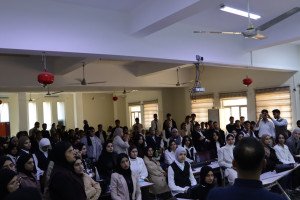
A master's thesis in the College of Engineering at the University of Basrah discussed (Modeling and Simulation of Refining Processes in Basra Refinery) The thesis presented by the student Mustafa Falah Kazem dealt with testing the mathematical model based on the Smith model to predict the performance of the catalytic reforming plant for naphtha in the Basra refinery. The projected model assumes that the catalytic reforming plant for naphtha at the Basrah refinery contains three one-dimensional, adiabatic fixed-bed catalytic reactors and a central furnace. For all three reactors, normal operating conditions for catalytic reforming include at operating temperature, operating pressure, space velocity LHSV, molar ratio H2/HC is (500 °C), (2.5 MPa), , (1.5) hr -1, (5.5) respectively. Platinum-alumina is used as a catalyst in system reactors. The performance of a catalytic naphtha reforming plant was investigated under different operating conditions Where the mathematical differential equations for the molar flow rates of the products and the temperatures as a function of the radius of the catalyst bed were solved for the three reactors using Euler's numerical method. Data collected over a year were used and analyzed. An artificial neural network (ANN) model was developed based on industrial plant data collected from Basrah Refinery. Thesis aims to model and simulate refinement operations in Basra refinery The thesis concludes that the neural network consisting of 17 neurons and one hidden layer (tansig-tansig) as a transfer function is the best model for representing all industrial data from Basra Refinery. The results of the ANN model showed that the percentage weight for pressure, temperature, LHSV and H2/HC are (10%), (55.4%), (15.10%), (9.10%), respectively. The error ratio between the predicted mathematical model and Ke-min model results was less than 3.74% and 6.46% for aromatic molar flow rate and temperature, respectively.







